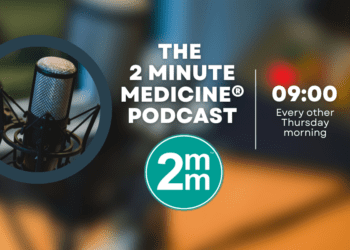Caregiver-mediated autism interventions effective for low-resourced families
1. Through a randomized trial of autism interventions in low-resourced children, both a Caregiver-Mediated Module (CMM) and Caregiver-Education Module (CEM) intervention significantly increased joint engagement over time between low-resourced children with autism and their caregivers.
2. The CMM group demonstrated a significantly greater rate of improvement in joint engagement than the CEM group.
Evidence Rating Level: 1 (Excellent)
Study Rundown: Research has demonstrated that early intervention for autism can provide children with important adaptive behavior, language, and social communication skills and improve long-term outcomes. However, the effectiveness of interventions for low-income, low-resourced children who often have therapies mediated by their caregivers, rather than by therapists, is unknown. The current study sought to evaluate a short-term, caregiver-mediated intervention specific to low-resourced families and its effects on core autism deficits. Two interventions were compared, the Caregiver-Mediated Module (CMM), which followed a manualized joint attention intervention for parent and child, and the Caregiver-Education Module (CEM), which involved the parent only. The main outcome was joint engagement, a measure of reciprocal and active engagement between the child and caregiver. Results indicated that both treatment groups were effective in increasing joint engagement over time, although the CMM group showed a significantly greater rate of improvement than the CEM group. One limitation of this study was its high attrition rate of 35%. Nonetheless, these results hold promise for underserved families with children with autism who can be taught a targeted intervention to improve core deficits.
Click to read the study, published today in Pediatrics
Relevant Reading: Randomized controlled caregiver mediated joint engagement intervention for toddlers with autism
Study Author, Dr. Connie Kasari, PhD, talks to 2 Minute Medicine: Professor of Psychological Studies in Education and Psychiatry, Center for Autism Research & Treatment, University of California, Los Angeles; Los Angeles, California.
“Our study aimed to determine if the types of interventions we commonly conduct in the clinic can be extended to low resourced families in the home setting with similar outcomes. We found that indeed this was true, and interestingly, giving parents the same information in a group parent education format was just not as effective in improving child outcomes. Child improvements were the greatest if we coached parents individually with their child. Two points about this finding: first, it suggests that parents need support to really change these types of social and communicative impairments in their children, and second, that parents CAN improve their children’s outcomes in meaningful ways. We have few examples of studies that have improved these core deficits in young children with ASD so this study, which is relatively large, and diverse in participant characteristics, is good news!”
In-Depth [randomized controlled trial]: A total of 112 child-caregiver dyads entered treatment, all of whom met criteria for categorization as low-resourced. Participants were between the ages of 2 and 5 and held a confirmed diagnosis of autism spectrum disorder. Participants were diverse across sites, with 66% identifying as a racial/ethnic minority and 15% speaking languages other than English at home. Participants were randomized to 1 of 2 groups, CMM and CEM, across the 5 participating sites in California, Ohio, Maryland, Washington, and Florida. The CMM group consisted of a 12-week, 2-hour weekly intervention in which caregivers were actively coached in their homes by trained interventionists. The manualized intervention followed the Joint Attention Symbolic Play Engagement and Regular (JASPER) treatment, which focuses on modeling and prompting for joint attention, expanding play skills, and using developmentally-appropriated language. The CEM group involved the same amount of caregiver training as the CMM group; however, the child was not present and teaching sessions focused on communication, behavior management, and routine-building. Both the CMM and CEM groups showed significant improvements in total time spent in child-caregiver joint engagement during the treatment period (F[1,192] = 11.28; P< 0.001), with the CMM group demonstrating a greater rate of improvement than the CEM group. The CMM also showed significantly greater rates of improvement in initiating joint attention and symbolic play skills than the CEM group.
More from this author: Targeting Children’s Asthma Care measures reduced asthma readmission rates, Youth exposure to e-cigarette advertisements increasing, PTSD symptoms in Boston-area youth after marathon bombing, Delaying measles vaccination after 15 months may increase seizure risk, Decreased sleep in childhood linked to later central adiposity
Image: PD
©2012-2014 2minutemedicine.com. All rights reserved. No works may be reproduced without expressed written consent from 2minutemedicine.com. Disclaimer: We present factual information directly from peer reviewed medical journals. No post should be construed as medical advice and is not intended as such by the authors, editors, staff or by 2minutemedicine.com. PLEASE SEE A HEALTHCARE PROVIDER IN YOUR AREA IF YOU SEEK MEDICAL ADVICE OF ANY SORT.









